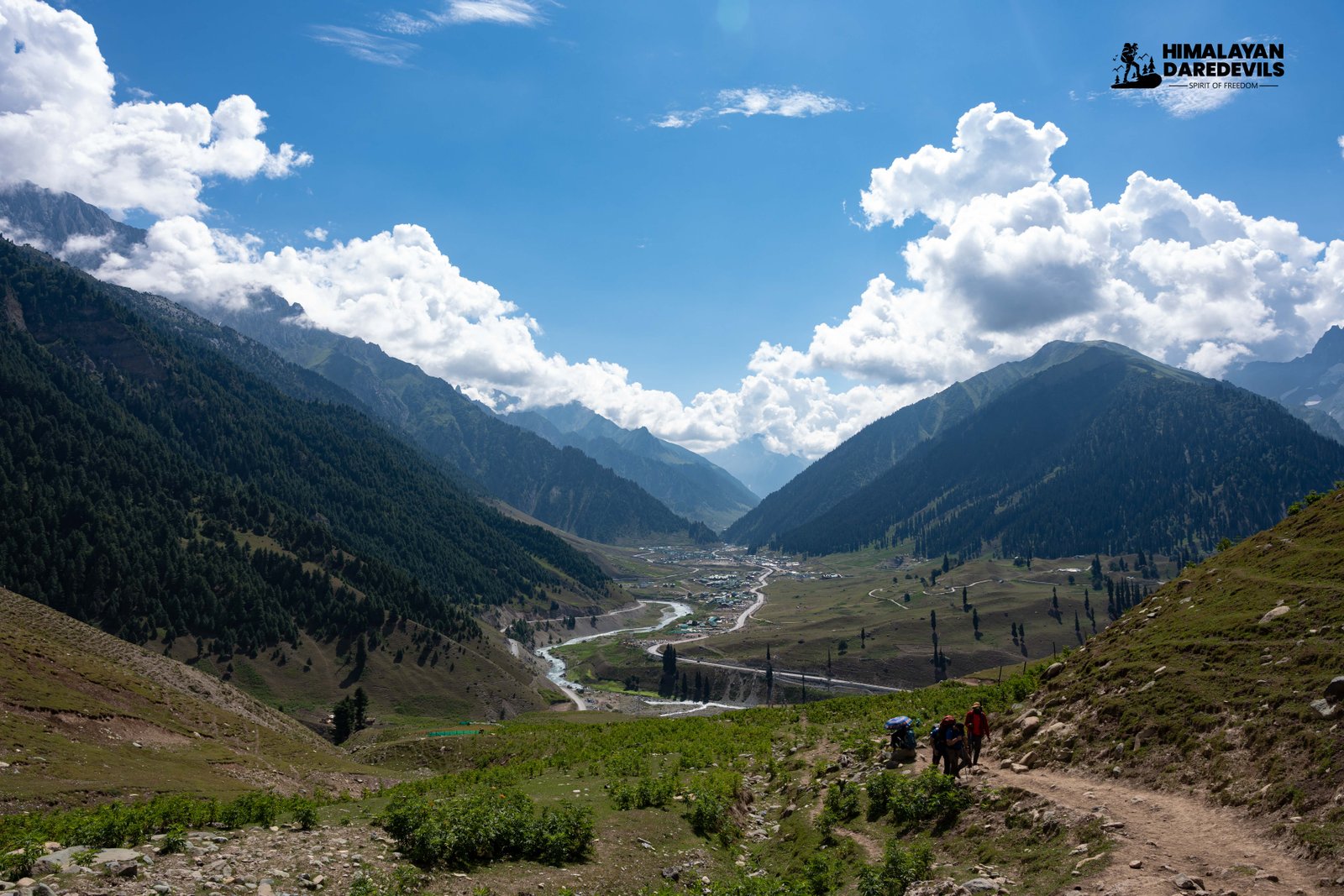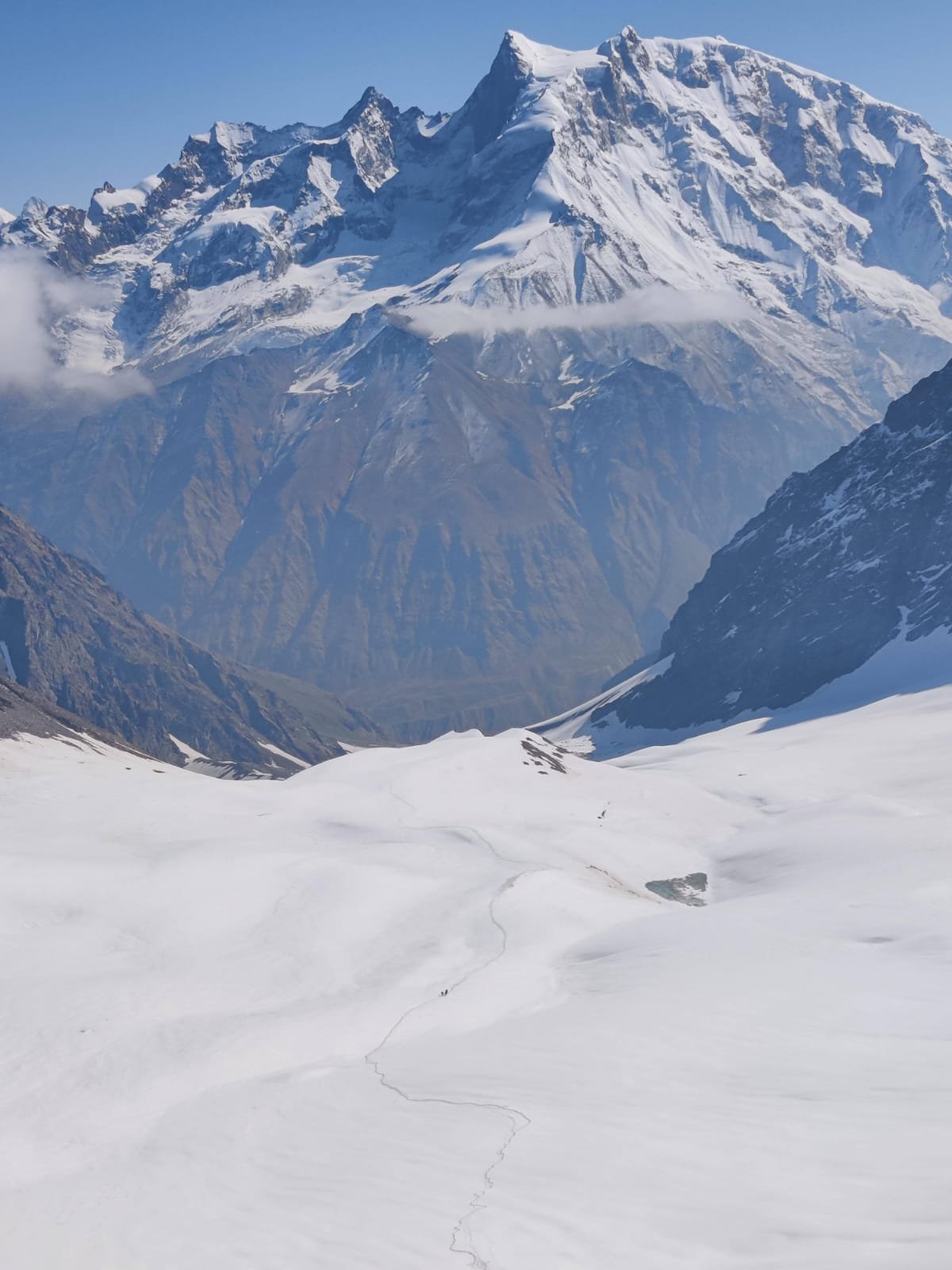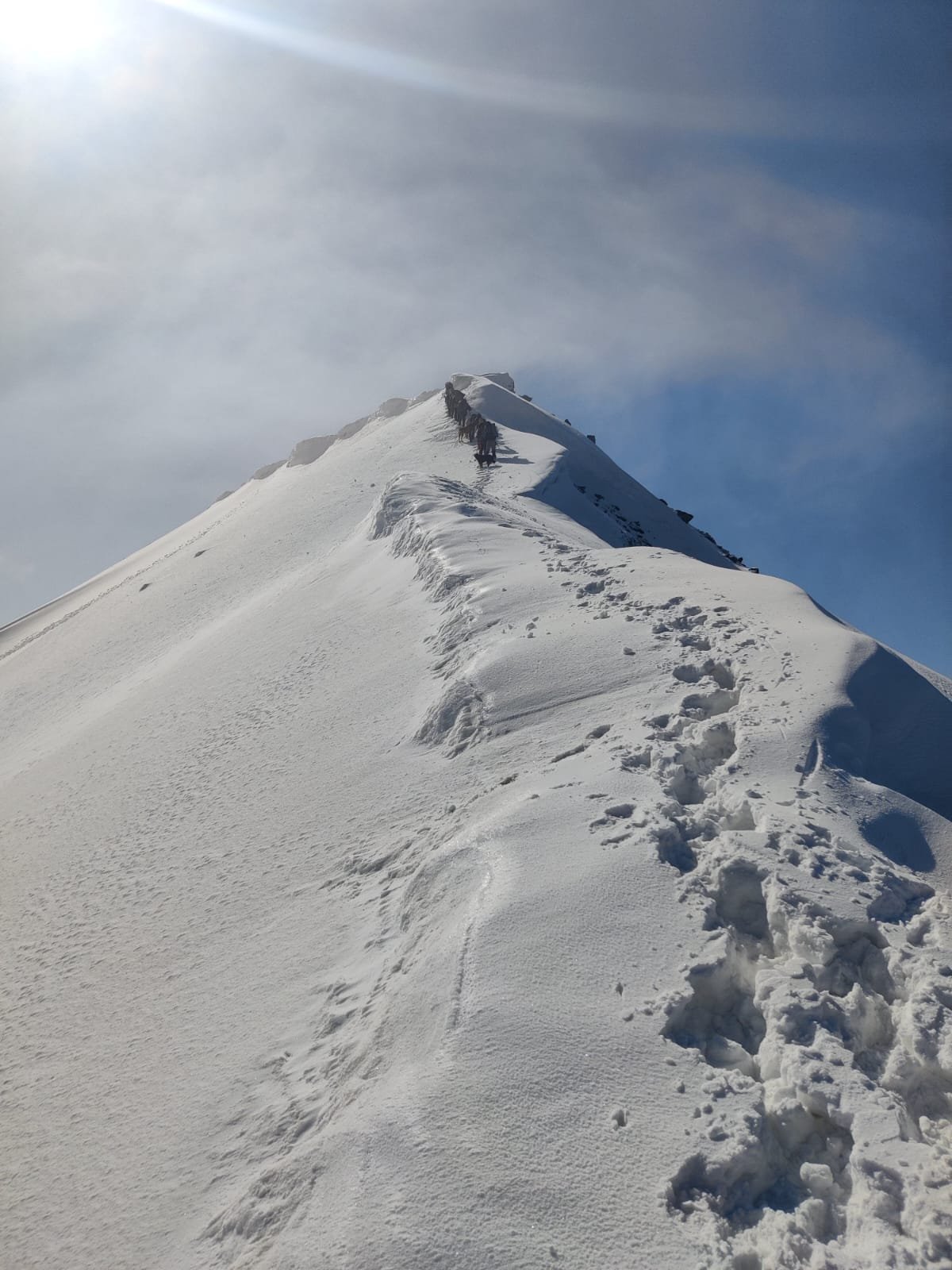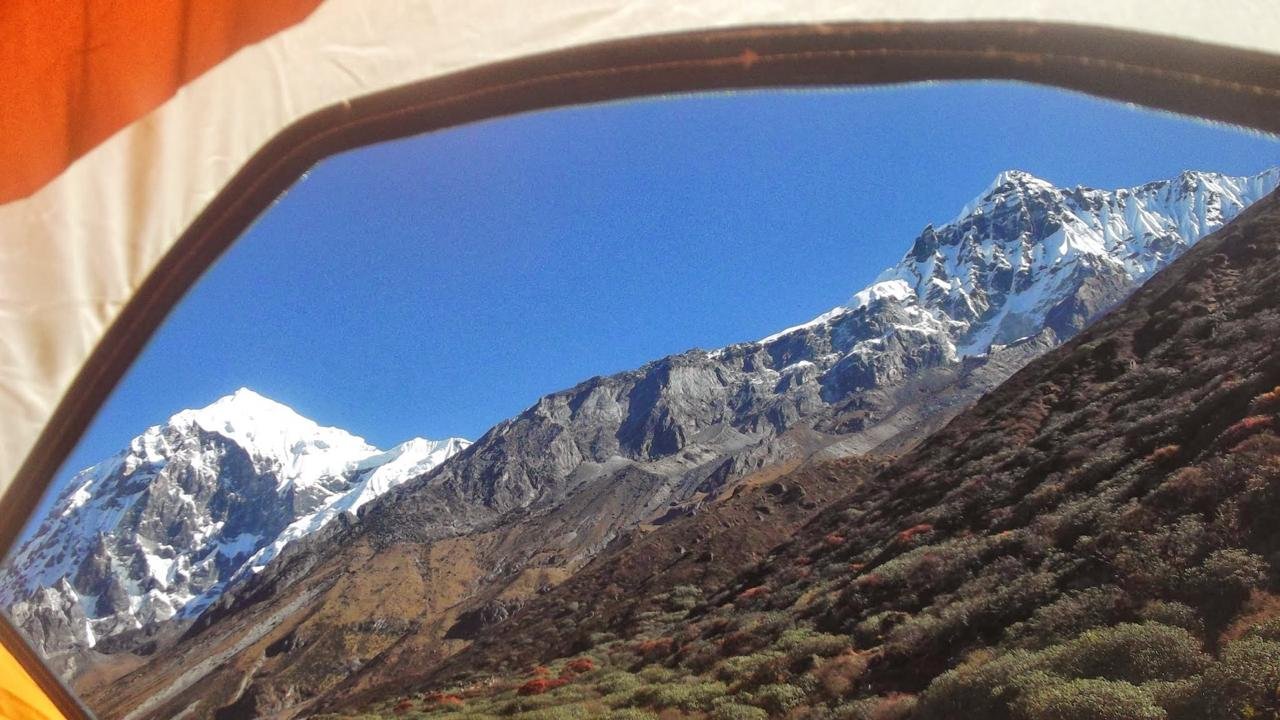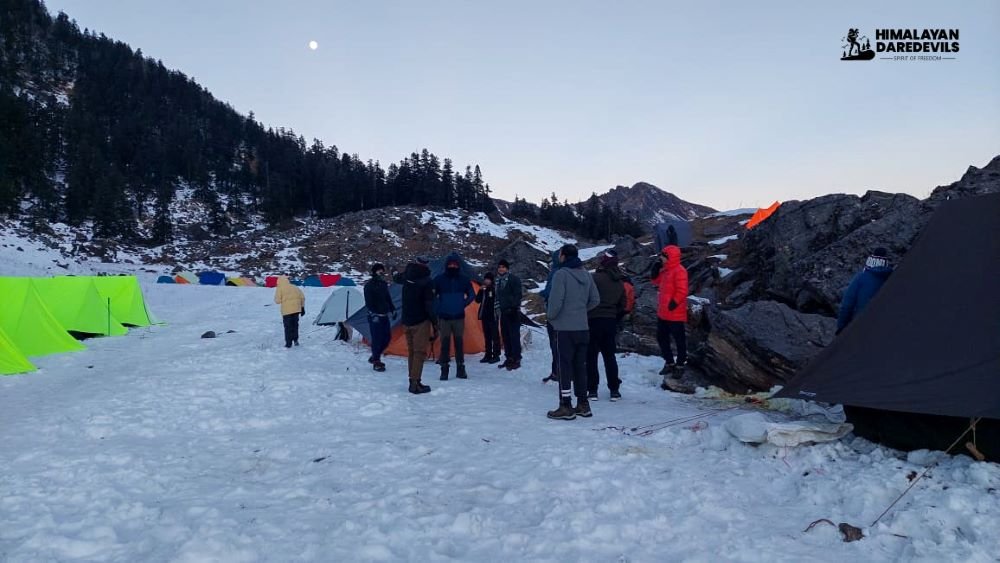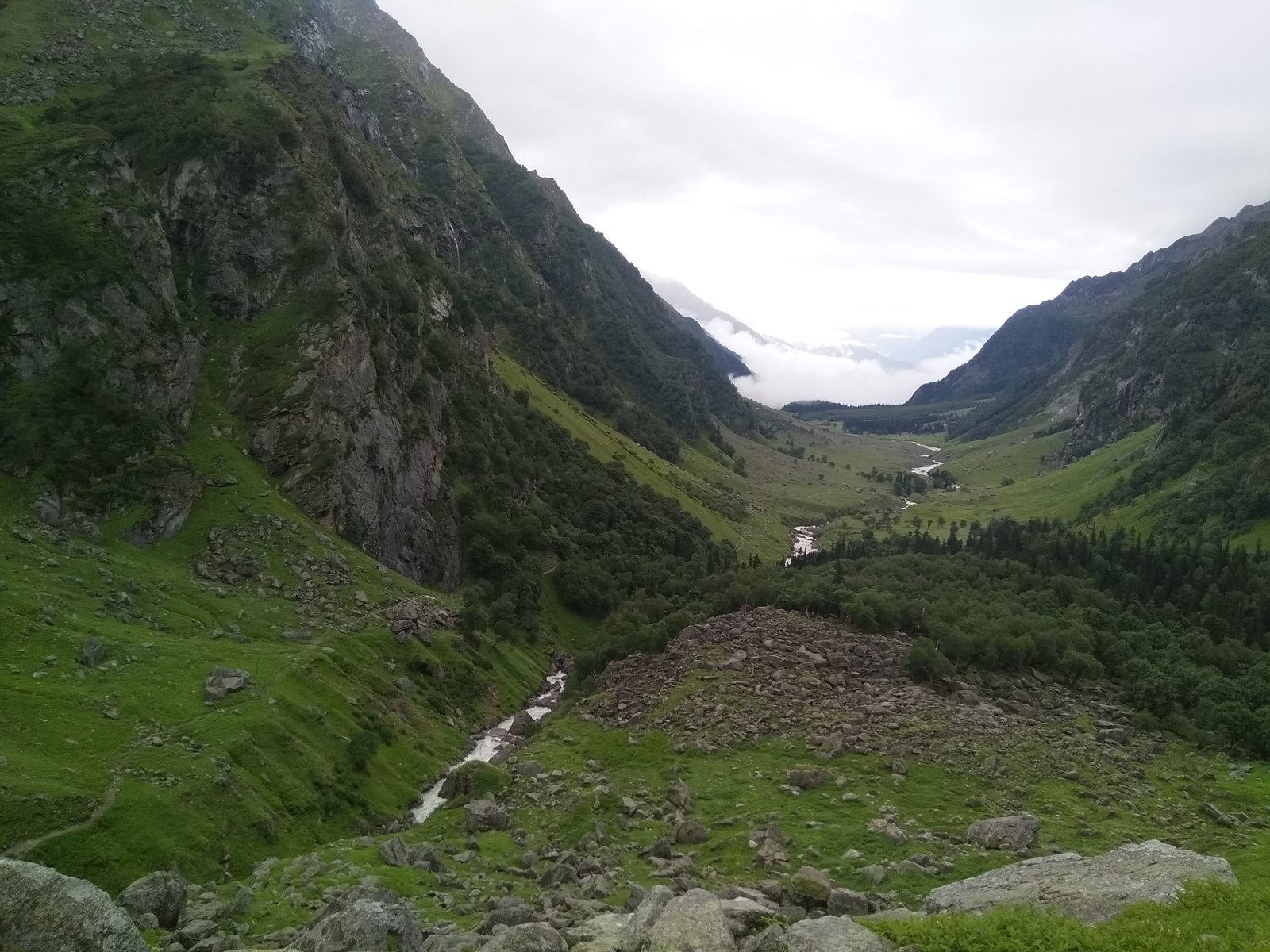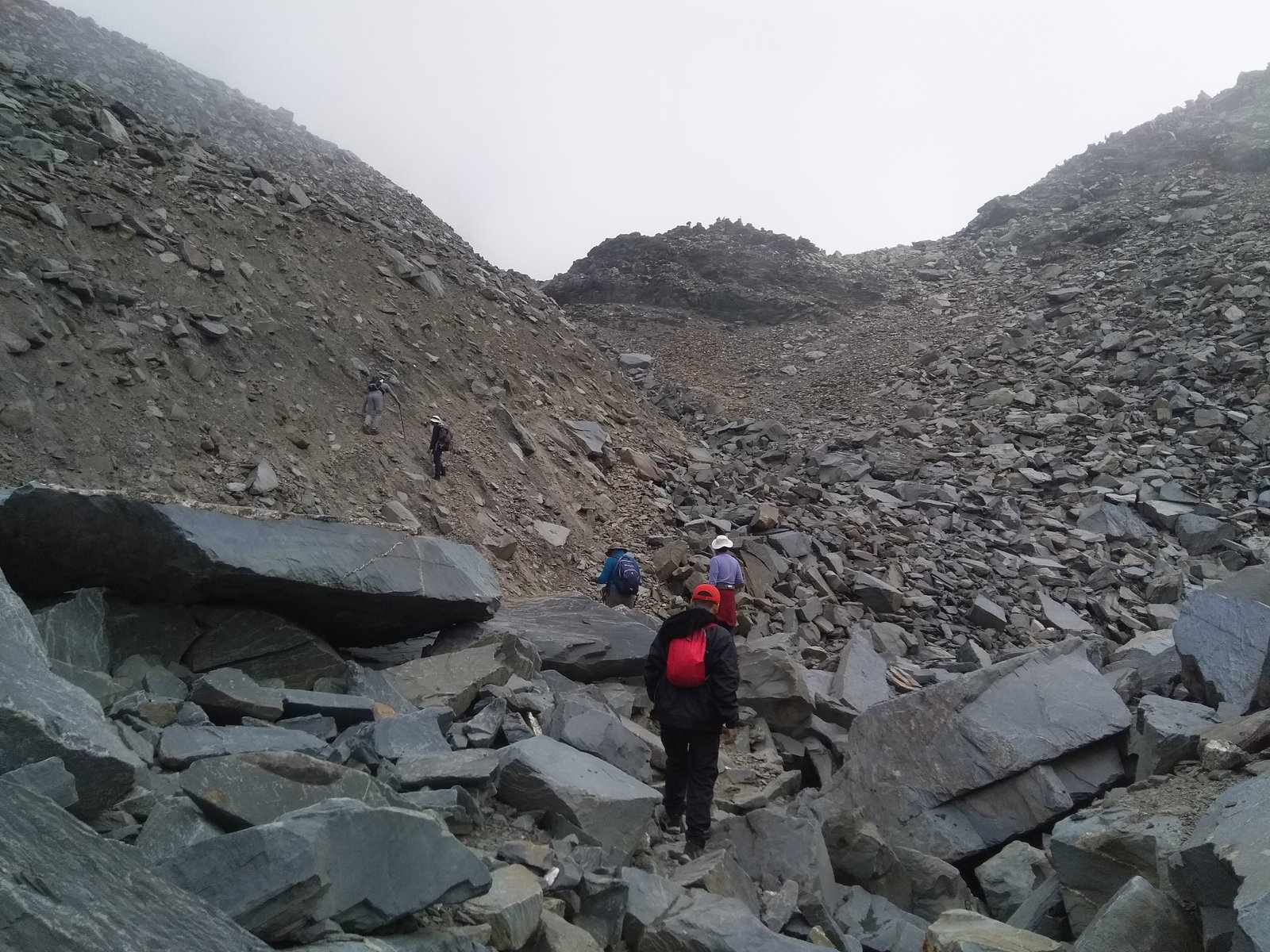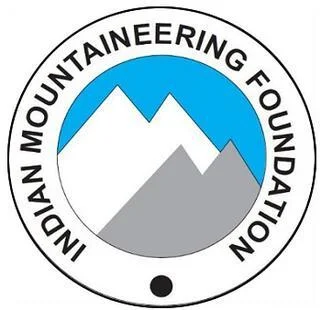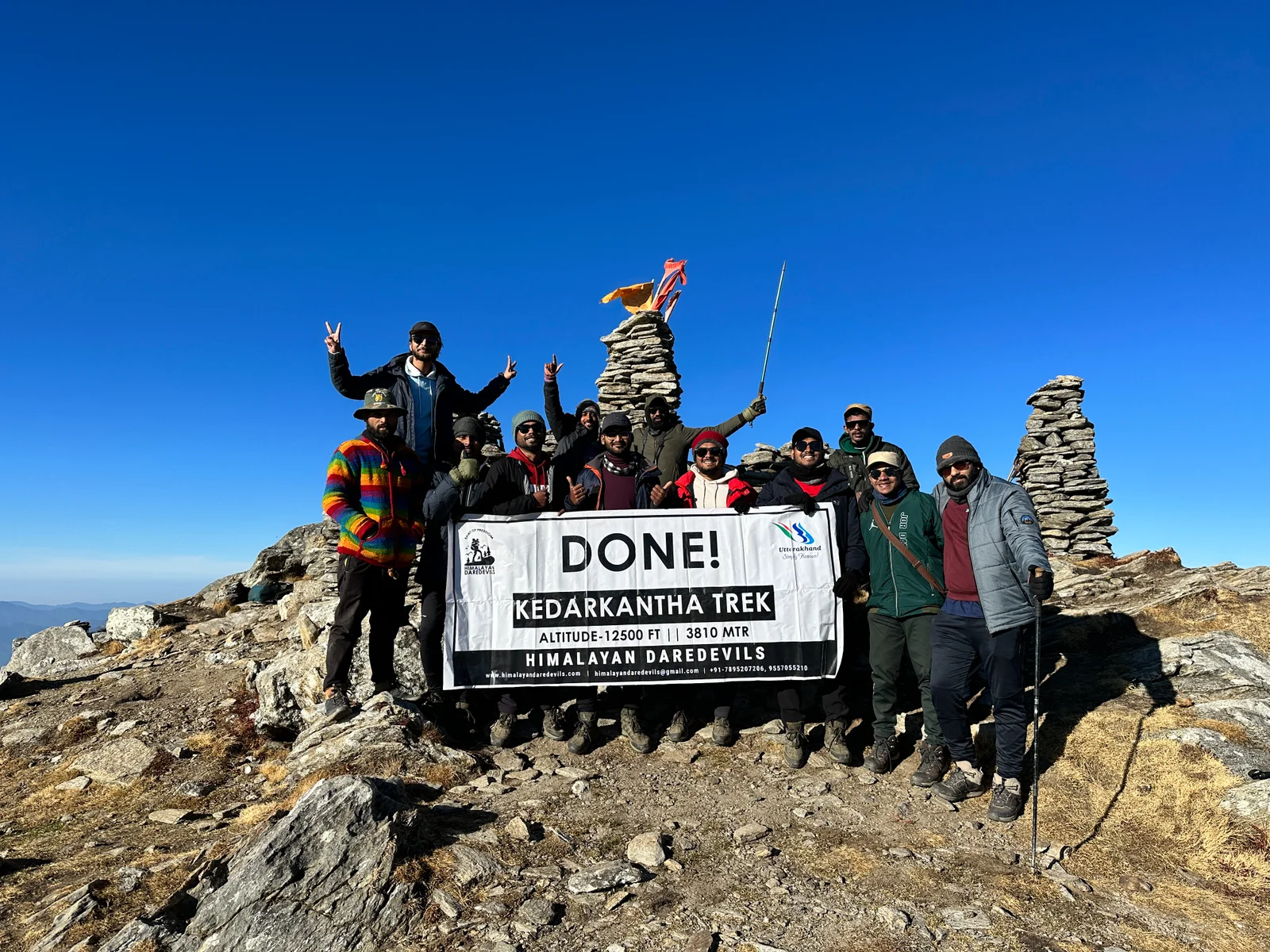Starting From
21,848
18,999.00
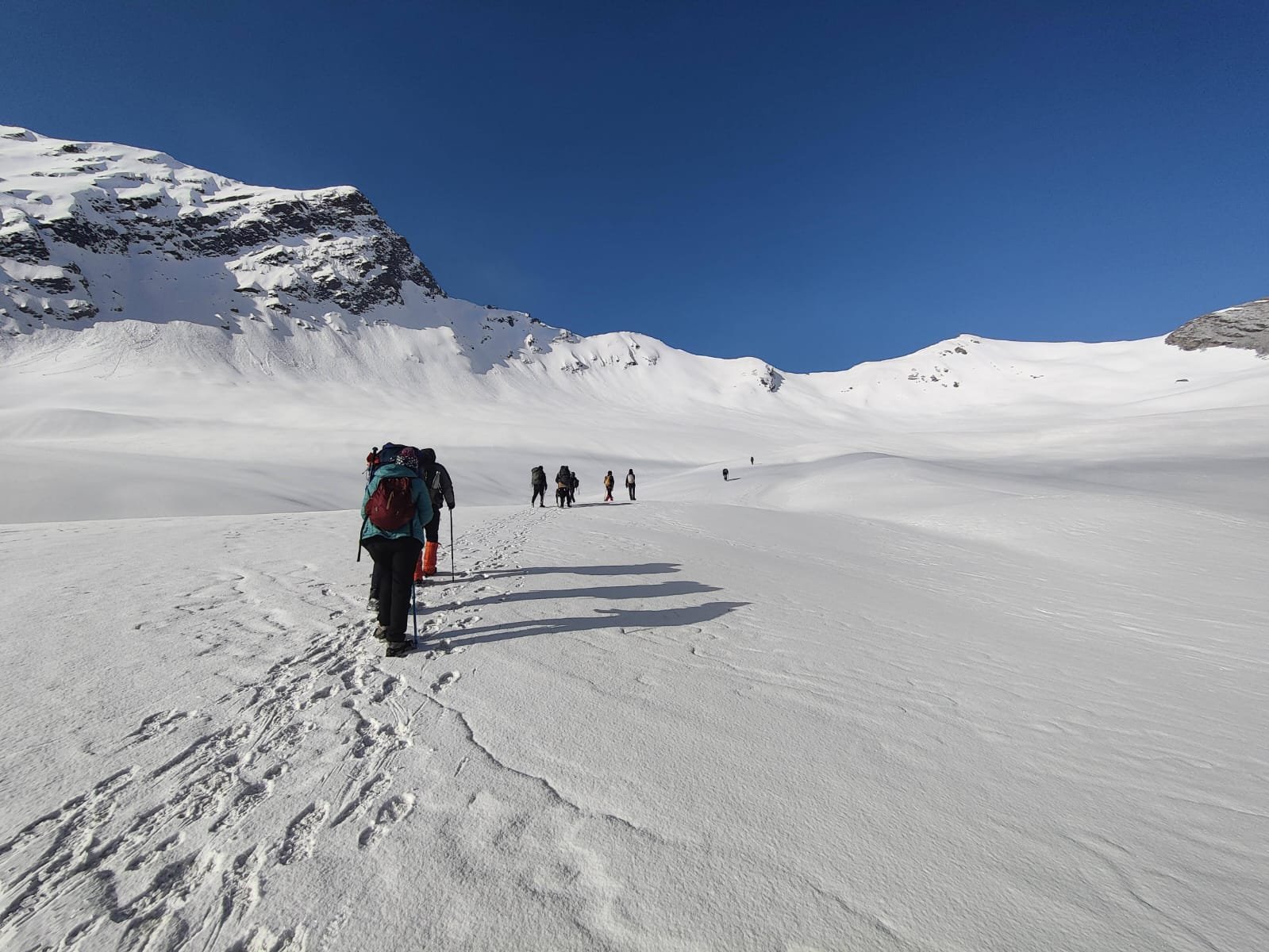
Starting From
21,849
18,999.00
Starting From
21,849
18,999.00
Bali Pass Trek (191+ Reviews)
A cross over trail through passes
Dehradun Railway Station
Jolly Grant Airport, Dehradun
Sankri
May , June & September , October
Sankri to Jankichatti
Meals while on trek( Veg, Egg)
Homestay/ Camping
Uttarakhand
8 Days
Difficult
16300 Ft
56 Km
Bali Pass Trek Overview
The Bali Pass trek is a breathtaking high-altitude trek that is situated in the Uttarkashi district of Uttarakhand. The trek is a crossover trail that takes you from the lush green valleys of Har ki Dun and Ruinsara to the Yamunotri Dham. Starting from the base camp at the quaint Himalayan village named Sankri and ending at Jankichatti, the BaliPass trek is approximately 60 to 65 KM long and takes around 7 to 9 days to complete.
The Bali Pass trek offers a unique opportunity to traverse the Himalayan Pass crossing and, along the way, experience the variety of landscapes that the Himalayas have to offer. The trek will take you from the green meadows of the Devsu Thach to the Glacial lake named Ruinsara tal, and it will show you a panoramic view of the Swargarohini, Bandarpoonch and Kalanag peaks when you reach the Bali Pass, standing at a height of 4,950 meters (16,240 ft).
Why Choose The Bali Pass Trek?
The trek to the Bali Pass is an opportunity to witness the raw grandeur of the remote Himalayas. Here are some of the reasons to choose the Bali Pass trek:
Stunning View of The Greater Himalayas:
The Bali Pass trek offers a variety of sceneries, from lush green meadows to snow covered peaks standing in the distance. The trail running parallel to the Tons river climbs up to reach the snow capped peaks.
The trail transforms once you reach the snow fields stretching to the distance. As the altitude rises, you see the mountain peaks like the Kala Nag much more clearly.
An Adventure
The Bali Pass is at an altitude of 4,950 meters, the high altitude and the mountainous terrain challenge you.
The snow crossing, steep climbs, and narrow ridges add to the thrill and make this a perfect trek for someone looking for an Adrenaline rush.
The Culture and The History:
The route to reach the Bali Pass passes through the ancient villages like Osla. These villages are known to be as old as the tales of Mahabharat.
The ancient wooden architecture of these villages is something to be witnessed and admired.
The Mythology
It is also believed that this trail was also taken by the Pandavas while they were on their Journey to reach Heaven.
The Himalayan peak named ‘Swargarohini’, meaning ‘the path to heaven’ takes its name from the same story. The peak is visible from the trek.
Diverse Flora and Fauna
The Bali Pass comes under the Govind Wildlife Sanctuary National Park, which is home to animals like Musk Deer, Snow Leopard, and Bearded Vulture.
For lovers of nature, this trek offers a chance to see a mixed bag of Birds, animals, flowers and trees.
What Do You See When You Reach The Bali Pass Summit?
After walking for almost 50 KM through narrow ridges and snow fields, you will reach Bali Pass on the seventh day of your journey . At the height of 4,950 meters the summit view from the Bali Pass is nothing less than spectacular. Standing on top you will see the deep valleys down below and the Himalayan giants that stand around the peak. Here is a detailed breakdown of the vistas that welcome you from the Bali Pass summit:
Swargarohini Massif ( I to IV)
A massif is a large mountain made up of multiple connected peaks. The Swargarohini Massif is made up of four peaks: Swargarohini I, II, III, and IV, The tallest of these is Swargarohini I.
The Swargarohini, meaning ‘Stairway to Heaven’, was said to have been climbed by the Pandavas, and it led them to Heaven.
The Swargarohini I, standing at a height of 6,252 meters, dominates the sky when you see it from the Bali Pass Summit.
Black Peak (Kalanag) - 6,387 meters
‘Kalanag’ means ‘Black Snake’ in Hindi and the mountain gets this name because of its Snake like appearance.
Another interesting fact about the peak is that it was first summited in 1955 by schoolmaster Jack Gibson and students of The Doon School.
Bandarpunch I - 6,316 meters
Another peak with a fascinating name, the ‘Bandarpunch’ means ‘Monkey’s Tail’ in Hindi. It is believed that Lord Hanuman came to this summit to extinguish his burning tail, flying all the way from Lanka.
This peak is also visible from Mussoorie hill station.
The famous Tenzing Norgay climbed this peak in 1937.
Yamunotri Valley
To the east of the Bali Pass, you will see the Yamunotri valley. The sacred Yamunotri temple below and the revered Yamunotri river.
The green meadows of the Yamunotri valley are beautiful and surreal to watch from the snow-covered landscape of the Bali Pass
Ruinsara Valley
To the west of the Bali Pass, you will find the Ruinsara Valley.
It is thrilling to look down and find the trail that you came up from, and the green meadows with the Rhododendron and Oak forests.
Best Time To Visit Bali Pass Trek
The best time to visit Bali Pass is during the pre- and post-monsoon period. The heavy rains during the monsoon make it difficult to enjoy the trek; this season is prone to landslides, roadblocks, and slippery trails, and during the winters, the trail is closed due to heavy snowfall. Let's see what each period has to offer.
May to July
The month of May brings the winds of spring that fill the Himalayas with a new color. For the rest of the spring, you will see colorful flowers and green meadows with patches of snow while on the trek.
Clear skies allow you to witness the snow-capped peaks like Swargarohini, Kala Nag, and Bandarpunch in their full glory.
Trekking this early in the season also means fewer crowds.
September to October
Autumn is also a good time to visit the Bali Pass trek. The trail comes alive during this time with the Golden hues of falling leaves.
Heavy rain during the monsoon season clears up the sky, which gives you crisp air during the autumn season.
The trail is much safer during this season as the snow at the lower parts has completely melted by this time.
Seasons to Avoid:
July to August (Monsoon)
Trails are slippery and hard to walk on
Frequent landslides due to the heavy rain cause roadblocks.
October to April (Winter)
Heavy snowfall causes the trail to be blocked
The freezing temperature can cause frostbite and other problems.
Highlights of Bali Pass Trek
The Bali Pass trek begins with the lush green meadows welcoming you, the glacial river Tons flowing parallel to the trail, and the tall pine trees that sway in the cold breeze coming straight from the snow capped mountains that you slowly begin to move closer to.
The Ancient Villages of Osla and Gangad.
The two himalayan villages of Osla and Gangad ancient as the tales of Mahabharat offer a glimpse into the past and a way to enjoy the long preserved himalayan architecture.
You will find in these villages beautiful temple architecture made in the Koti-Banal style.
The locals in these villages are known to worship Duryodhana.
Glacial Ruinsara Lake
Ruinsara lake at a height of 3,500 m is beautiful and serene, it's still waters reflecting the Swaragini peak can be the singular reason to pack bags and come climb the Bali Pass trek.
Locals believe that Pandavas visited this lake during exile.
Divine Mountain Peaks
The Trek will take you on a trail from where you will be able to see the perpetually snow-covered mountain peaks.
The Himalayan peaks like Swarogini (6,252 m) and Bandarpoonch (6,387 m) will welcome you from far away as you trail through the green meadows, and slowly you will climb and conquer the mountains you see from afar.
A Geographical Wonder
The Bali Pass trek connects the Har ki Doon valley to the Yamunotri Dham and can genuinely be said to be a wonder of geography that must be visited by people curious about the wonders of nature.
Stay Smart, Trek Safe - Safety Tips for the Bali Pass Trek
Before the trek
Physical Fitness
- The Bali Pass trek is a difficult, high altitude trek that rewards the trekkers with jaw dropping views of the Himalayan landscape. These unique vistas are a result of the remoteness of the trek, the same remoteness that makes the trek more difficult than usual. It is essential to keep in mind some safety tips while climbing the wild himalayas so that your journey is smooth and hassle free.
The trek to BaliPass is no ordinary trek, you will have to climb up the height of 4,950 meters to reach the Bali Pass, the trail to reach there stunning but also difficult. Narrow pathways, steep climb and descent, sharp ridges can take a toll on your body if you are not prepared physically.
Start Training at least a month in advance. You should start doing exercises that will increase your stamina, like cycling, running, swimming.
Focus on strength exercises. Exercises like crunches, squats and also weight training will strengthen your muscle and core making it easy to climb the steep trails.
Choose Best Time To Visit
It is of the utmost importance to choose the right time for your visit to the Bali Pass trek. Different seasons come with differences in the way you would experience the trek.
The best time to visit the Bali Pass trek is from May to June and then from Mid-September to October. During these times the trek is safe and secure
The Monsoon months (July and August) cause the trail to get slippery and filled with leeches. The heavy rain also causes landslides and roadblocks, making it difficult to move from one place to another.
The winters (November to April) bring heavy snow making it very difficult to find the trail buried under. The freezing cold also increases the chances to get frostbite.
Choose The Right Trekking Company
On a difficult trek like the Bali Pass trek it is important to choose the company that is with you at every step and takes you through the trek safely and responsibly. Solo trekking is strongly discouraged at this trek unless you are a highly experienced trekker. A good trekking Company will provide you:
Skilled local guides that know the trek inside out and take you safely through challenging terrains, weather shifts and snow covered ridges.
Good and tested equipment that would keep you safe and make the trek a lot easier.
On The Trail
Stick to the Trail, Follow the guide
It is important that you stick to the trail and do not take any unplanned detours. The remote Himalayas are filled with unknown bends that might get you in trouble.
Follow the Guide Closely and avoid Shortcuts.
Do not wander off into unknown corners of the trek unguided, especially when you enter the High himalayan region.
Carry The Right Gear
The weather at high altitudes can change at any moment, the pleasant sunshine can be covered by black clouds of rain in a matter of minutes. It is important that you carry the right gear.
Good Trekking Shoes: Waterproof, High ankle shoes with a good grip.
Warm Clothes: Thermals, fleece and rain coats or waterproof jackets, to keep you warm and dry.
Other equipment like the headlamp, trekking poles and rain cover will make the trek comfortable and safe.
Carry the basic first aid kit, which should include - bandages, antiseptic, painkillers, ORS, antiseptic wipe packets etc,
Stay Hydrated and Eat Well
The Bali Pass trek is long and difficult, it is important to stay hydrated and eat healthy energy giving food, to maintain health and strength to complete the trek safely.
Drink at least 3 to 4 liters of water to stay hydrated
Eat Carb rich food like - oats and brown rice - for long lasting energy.
Protein rich Food like - Lentils, paneer, eggs - to maintain muscle strength.
Carry - Energy rich Snacks like - Dry Fruits, protein bars, chocolate rtc - for quick energy.
Avoid - Junk food and alcohol.
Acclimatize Properly
Trekking to high altitude treks like the Bali Pass also comes with the risk of getting Acute mountain sickness if proper steps are not taken to avoid it.
Plan a gradual ascent, take proper rest before climbing further.
Know the symptoms - Nausea, Headache, fatigue and poor sleep.
If you feel unwell let everyone know and stop climbing higher.
Remember the rule - Climb high, sleep low.
Tips & Tricks For Bali Pass Trek by Himalayan Daredevils Expert Guide
Itinerary
Pickup point: Dehradun Railway Station
Leave Dehradun for Sankri (7-8 hours, 220 km) via commendable small towns like Purola.
Enjoy sights of green valleys, thick forests, and the Yamuna River.
Reach Sankri, located in the Himalayas, which is a quiet village.
Check into a guesthouse. Rest well and prepare for the trek.
SHORT ITINERARY
DETAILED ITINERARY:
After pick up from Dehradun Railway station, there will be 7-8 hours of driving time starting from Dehradun to Sankri. Sankri is popularly known as the base village for the Bali Pass Trek. You’ll be passing through the lovely towns that are filled with beautiful valleys and green forests. There are lots of lovely villages on your way, and you’ll have to cross the mighty Yamuna as well. Once at Sankri, a village, relax and enjoy the beauty that sinks in before the trek. Relax over a hot meal and prepare for the night at the guest house.
Drive from Sankri to Taluka (12 km, 45 minutes) via villages and valleys.
Trek from Taluka to Seema (12 km, 6-7 hours) through green meadows and forests on the banks of the Supin River.
On the way enjoy the sight of the Himalayan foothills and other plants.
During the day, moderate ascent as the time passes and alpine meadows are reached with local fauna.
In Seema, put up the tents, have dinner, and spend the day resting in such beautiful surroundings.
SHORT ITINERARY:
DETAILED ITINERARY:
Start your journey with a 12-kilometer drive from Sankri to Taluka, which takes approximately 45 minutes. The village is located in the Supin River valley and has green patches all around. Upon reaching Taluka, steer towards Seema, which is situated at an elevation of 2560 m and is approximately 12 km away from Taluka. The trail meanders through the thick elevation of oak and pine, sporting impressive scenery of the snow and mountains as one goes ahead. The atmosphere also begins to change as one begins to gain altitude, with the terrain giving stunning meadows and, till the end, rocky valley layers. Reach Seema pitch tents for the night, and enjoy the night sky.
Walk in the beautiful area of Seema to Rainbasera (9 km, 4-5 hours) moderately through beautiful meadows and alpine landscapes.
Go through large pastures and enjoy the quiet of the area.
See the scenery of the Swargarohini and Bandarpoonch mountain upper ranges.
A steady climb through the verdant and quiet forest.
Finally, get to Rainbasera, yet another beautiful campsite; the surrounding mountain peaks are out of this world and provide a fitting backdrop. Prepare the tent for the night.
SHORT ITINERARY:
DETAILED ITINERARY:
Have your breakfast and start your trek from Seema to Rainbasera at 3086 m. This is a distance of 9 km that takes about 4 hours with gradual elevation. The path leads to widespread fields and lush green grasslands where there are herders with their sheep and goats. You will appreciate the peace on the walk and the sights of Swargarohini and Bandarpoonch mountains in the background. The region is lush with vegetation, and the large areas create a good canvas for photography.
The path is a gentle slope up; thus, you can adjust to the height while taking in the sights around you. Rainbasera is a quiet site which is the aim of the trek. Once at the place, pitch up your tents and relax as the day has been long. The location is so expressive of the hills that it makes the place ideal for a peaceful rest while appreciating the surrounding nature.
Trek from Rainbasera to Ruinsara Tal (7.5 km, 4-5 hours).
The route takes you through patches of high-altitude bush and meadowland.
En route, a gradual climb, crossing brooks, soaks the eye with a diversity of high-altitude vegetation.
Beautiful sights of Mount Swargarohini and Kalanag understand the beauty of Srikhand.
As you move closer to Ruinsara Tal, the scenery is rougher, and you can see glaciers in the vicinity.
Reach Ruinsara Tal, a beautiful glacier surrounded by high walls of snow & ice, and pitch a tent by the shores of the lake for a night stay.
SHORT ITINERARY:
DETAILED ITINERARY:
The fourth day of this trek takes you from Rainbasera to Ruinsara Tal, covering a distance of 7.5 km, which shall take about 4 hours to complete. The trek path begins with some easy uphill walks through dense alpine forests, from where sights of various species of flora and fauna of the region can be enjoyed. Further, the scenery changes into extensive meadows with blooming wildflowers, providing a perfect outback setting for the day’s adventures.
As for the views, the best ones on this trek are in the winter season, when the highlights include snow-covered white fresh peaks, with the first eye-catching scene being the Swargarohini range in the background. The last part of the ascent delivers the hiker to Ruinsara Tal, a glorious but very sensibly located glacial lake at a height of 3565 m. Since the lake is encircled by ice-capped hills and mountain barriers, the striking landscapes of the region will leave you spellbound with sheer natural beauty.
Ruinsara Tal, as you might observe, is a peaceful and quiet area and great to take a break. The water of the lake is so clear it even reflects the mountain glaciers around it. When you get there, pitch your tent somewhere next to the lake, listen to the silence and the mountains, and just sit under the Himalayan sky studded with stars. Camp at the campsite located close to Ruinsara Tal for the night.
Trek from Ruinsara Tal to Odari (4 km, 3 hours) towards rocky and high-altitude meadows.
Start trekking onto the steep incline.
Welcome to the views of the sky with stunning snowcapped peaks of the surrounding area, including Swargarohini and Kalanag.
As you trek, the clouds and the environment become more and more glacial and uneven.
Get to Odari, a nice campsite of 4,008 m with exceptionally beautiful valleys and mountains; make your night respite there.
SHORT ITINERARY:
DETAILED ITINERARY
Begin your day with some breakfast before trekking from Ruinsara Tal to Odari, a distance of 4 km that is not long but rather a difficult one, taking roughly around 3 hours. Starting on a moderate incline, the path winds through rocky and alpine grassy portions. With each increment in elevation, the surroundings change, and one gets a wider perspective of the hilltops and glaciers in progress. The track is moderately difficult, with some rough patches on the route, but the gorgeous landscape makes up for the pain as well.
Going up, there are sky views of Kalanag and Swargarohini, who reside on the upper section of the blue sky. The indication is great, as one can actively engage in the trekking and be thrilled with the surroundings of mother nature as one can experience the rough sites of the Himalayas and rejoice in an achievement.
Arrive in Odari, set up your tents at this gorgeous camping spot that stands at 4,008 m, and enjoy. You can nearly always find this place, which is encircled by untouched meadows and overlooks the other peaks, to be a great place to relax at the end of the day after trekking. Take in the tranquility of the high altitude and repose in anticipation of the forthcoming days of the trek. Clear skies and peaceful surroundings allow stargazing to be a delightful activity. Campsite in Odari for the night.
From Odari trek towards Bali Pass base camp (3.25 km, 3 hrs), which requires one to cross a steep rocky area.
Proceed along to make the steep ascent and the approach to the pass, which involves walking on the snow-covered paths.
Capture mesmerizing views of the surrounding glaciers, snow-capped peaks, and alpine scenery.
Arrive at base camp Bali Pass (4,678 m); numerous towering mountains like Swargarohini and Kalanag will surround you.
SHORT ITINERARY:
DETAILED ITINERARY:
We continue onwards, this time to the base camp of the Bali Pass, 3 hours from Odari with a distance of 3.25 km. A steep climb is in order at the start of the ascent as one moves away from the grassy fields and into more hostile areas that are characterized by rocks. Although the way forward is quite taxing, with loose stones and steep gradients all around. The wonderful sight to behold the aides as Swargarohini, Kalanag, and Bandarpoonch assures one to push on when the situation seems tough.
Finally, after ascending higher into the complete alpine setting dominated by glaciers and sharp peaks from every angle, there is yet a steep pull that has to be completed to get to the base camp. As tough as the last pull may sound, it is very much worth the trouble. The moment, however, you get to the Bali Pass Base Camp at a height of 4678 m, the first sight that nearly all you see is a white sheet over everything around you with only the mountain’s shape visible above it, and the view of the valley below is just as grand.
The base camp is an ideal place for rest and acclimatization prior to making a summit attempt. The high-altitude location is also great for camping. This will definitely be one of the highlights of your treks, with views of the vast Himalayan range and fresh air of the mountains. Stay overnight in the campsite at the base camp.
Move from base camp to the top of Bali Pass, which is the highest point (4950 m). This will require a 5-6 hour hike up a rocky and snow-covered slope.
Climb to the top of the Bali Pass and take time to enjoy exquisite views of glaciers, numerous peaks like Swargarohini, and the valley below.
After enjoying the sights, storm up the pass towards Lower Dhamni, where one has to walk for 10 km, which takes around 3-4 hours.
As the altitude decreases, the descent takes you through alpine meadows, invigorating forests, and fresh streams for an ever-inviting change of views.
Get to Lower Dhamni (3,415 m) and enjoy a rest at a serene campsite with beautiful views of the valley after a physically strenuous day. Prepare camp for the night.
SHORT ITINERARY:
DETAILED ITINERARY
The seventh day entails conquering the most difficult part of the trek, which is reaching the top of Bali Pass (4,950 m). A 5- to 6-hour climb gets strenuous as rocky surfaces and snow-covered paths are encountered. There are strenuous moments during the ascents due to high altitude and its effects on the body; however, it’s the breathtaking view over the summit of the Indonesian region of Bali Pass that one looks forward to. You can enjoy a 360-degree view of the region with all the snow-capped mountains, glaciers, and valleys of the region. The phenomenal view of the Swargarohini, Bandarpoonch, and Kalanag on the nearby horizon is simply breathtaking.
Once an adequate amount of time has been spent atop the peak, a move downwards towards the Lower Dhamni region of 3,415 m can be initiated. And when 10 km of altitude is lost in around 3–4 hours, the range of steep rocky paths gets substituted with wide meadows and forests.
When you arrive in Lower Dhamni, gently pitch your tent in the peace that comes with the towering mountains and thick forests. This beautiful place, surrounded by mountains and trees, is perfect for resting after a long journey. We will be placing the camp and sleeping in a tent at the campsite in Lower Dhamni.
Hike from Lower Dhamni to Yamunotri (9.5 km, 5-6 hours) through forests and follow the bank of the river Yamuna with breathtaking views of the surrounding hills and mountains.
After arrival in Yamunotri, offer prayers at Yamunotri Temple, which is one of the Char Dham temples, and soak in hot water springs nearby.
Look at the descent from Yamunotri to Janki Chatti (5 km, 2-3 hours) through thick forests and amazing landscapes.
From Janki Chatti, drive to Dehradun (190 km, 8-9 hours) with nice views of the lower Himalayas.
Welcome to Dehradun, where the Bali Pass trek ends, and prepare for a well-deserved rest after a challenging but pleasing adventure.
SHORT ITINERARY:
DETAILED ITINERARY
On the last day of the trek, it is necessary to first walk from Lower Dhamni to Yamunotri. This covers 9.5 kilometers, and this process should take between 5 and 6 hours. The route is through dense forests or even along the banks of the Yamuna River, which is more relaxing. With the sounds of the river around, cool air, and amazing views of the hills, the trek is beautiful with lots of ease.
When you reach the location of Yamunotri, you will find yourself at an elevation of 3,293 m, and one can see the splendor of the leaning Yamunotri Temple, which is a holy shrine that pilgrims adore and is dedicated to Goddess Yamuna. It is one of the four Dhams of India, and devotees come to this region to worship Goddess Yamuna. The temple is also surrounded by hot springs.
After your visit, start your journey back to Janki Chatti, which is a 5km trek that will last roughly 2-3 hours. When you arrive in Janki Chatti, proceed to Dehradun by road, as the distance is around 190 kilometers. It takes almost 8-9 hours for the trip, which is scenic as you are coming down through the lower Himalayan hills and into the town of Dehradun to conclude your Bali Pass Trek trip.
Bali Pass Trek Map
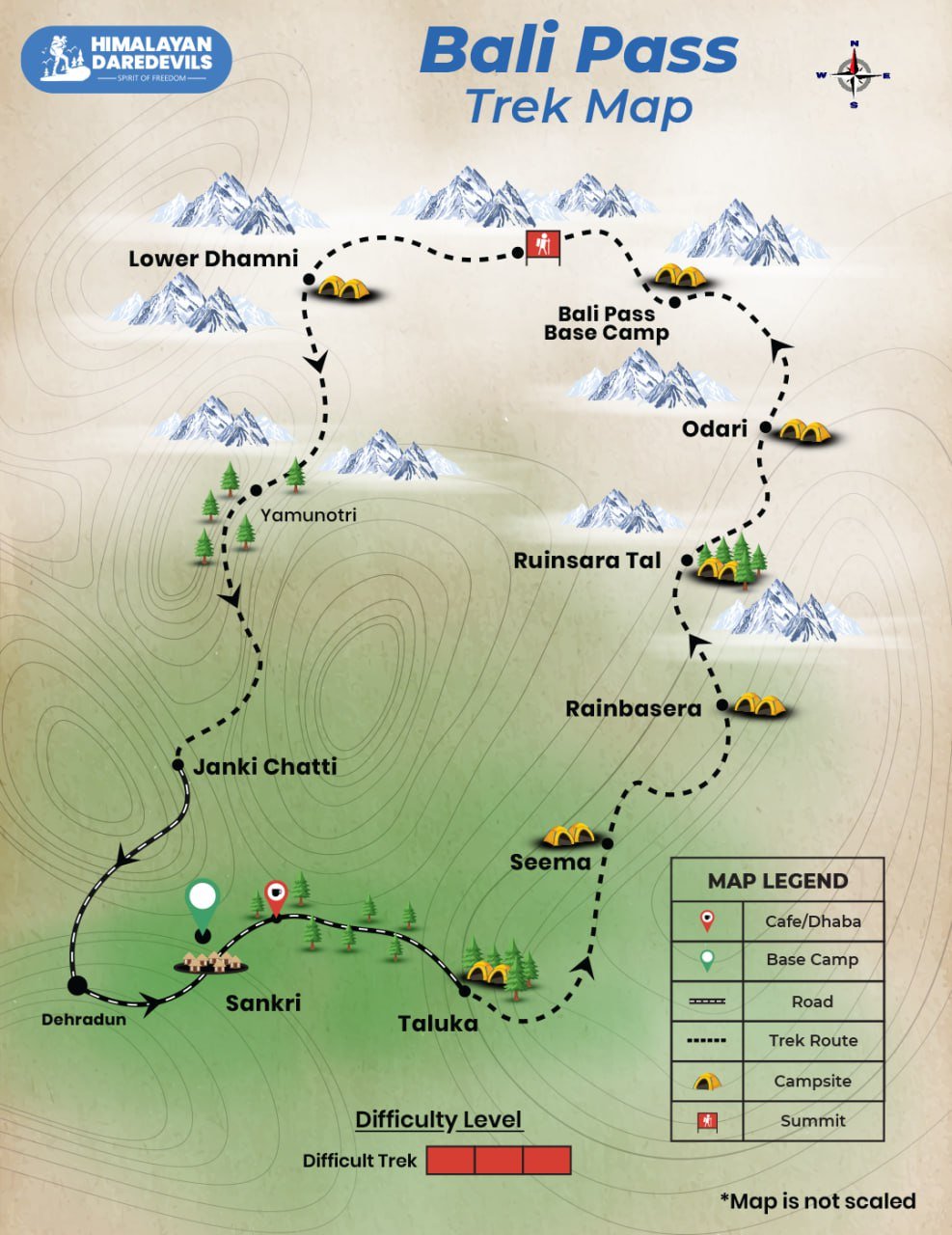
Trek Review Videos
Inclusions
Exclusions
1. Meals while on trek (Veg. + Egg).
2. All necessary entry fees and permits.
3. Accommodation: - Guest house, Home stay, camping during Trek.
4. Mountaineering qualified & professional trek Leader, guide, cook and Support staff.
5. First aid medical kits, stretcher and oxygen cylinder.
6.Trek equipment: Sleeping bag, mattress, tent, kitchen & dinning tent, toilet tent, utensils and crampon (if required)
7. Staff Insurance.
8. Porters/mules to carry central equipment.
1. Any kind of personal expenses.
2. Food during the transit.
3. Mules or porter to carry personal luggage.
4. Insurance.
5. Transport (Non Ac)
6. Any kind of emergency evacuation charges
7. 5% GST
8.Any expense incurred or loss cost by reasons beyond our control such as bad weather, natural calamities (landslides, floods), flight delays/rescheduling/ cancelations, any accidents/medical evacuations, riots/strikes/war/pandemics etc.
9. Anything not specifically mentioned under the head.
1. Meals while on trek (Veg. + Egg).
2. All necessary entry fees and permits.
3. Accommodation: - Guest house, Home stay, camping during Trek.
4. Mountaineering qualified & professional trek Leader, guide, cook and Support staff.
5. First aid medical kits, stretcher and oxygen cylinder.
6.Trek equipment: Sleeping bag, mattress, tent, kitchen & dinning tent, toilet tent, utensils and crampon (if required)
7. Staff Insurance.
8. Porters/mules to carry central equipment.
1. Any kind of personal expenses.
2. Food during the transit.
3. Mules or porter to carry personal luggage.
4. Insurance.
5. Transport (Non Ac)
6. Any kind of emergency evacuation charges
7. 5% GST
8.Any expense incurred or loss cost by reasons beyond our control such as bad weather, natural calamities (landslides, floods), flight delays/rescheduling/ cancelations, any accidents/medical evacuations, riots/strikes/war/pandemics etc.
9. Anything not specifically mentioned under the head.
What should you carry for the Bali Pass Trek
- Trekking shoes: A good pair of trekking shoes is essential for a comfortable and safe trek. Look for shoes that are sturdy, provide good ankle support, and have a good grip on different types of terrain.
- Backpack with rain cover (50-60 ltr): A backpack is necessary to carry all your gear. Make sure it's the right size for your trek, and comes with a rain cover to keep your belongings dry in case of rain.
- Thermals (upper and lower): Thermals are lightweight and comfortable base layers that help regulate your body temperature in cold weather. Bring both upper and lower thermals to keep warm.
- 3 T-shirts (advisable quick dry): Choose quick-drying T-shirts made from breathable and moisture-wicking materials. This will help keep you cool and dry during your trek.
- 2 trek pants: Choose lightweight and comfortable trek pants that are easy to move in and can dry quickly if wet.
- Jacket (-10 degree): A warm jacket is essential for cold weather. Choose a jacket that is waterproof and windproof, and provides good insulation.
- Fleece or hood (2): Fleece jackets or hoodies are great mid-layer options to keep warm. Bring at least two, as they can also be used as an extra layer at night.
- Sunglasses (UV protected): Protect your eyes from the sun's harmful UV rays with sunglasses that are designed for outdoor activities.
- Sun cap: A sun cap or hat with a brim will protect your face and neck from the sun.
- Hand gloves: Bring a pair of lightweight gloves to keep your hands warm and protected from wind and sunburn.
- Woollen cap: A woollen cap will keep your head and ears warm at night or in cold weather.
- Socks (3 pairs min): Bring at least three pairs of good quality socks that are moisture-wicking and provide good cushioning and support for your feet.
- Headlamp: A headlamp will come in handy if you're hiking in low-light conditions or need to find your way in the dark.
- Trekking pole (if needed): Trekking poles can help reduce strain on your legs and provide additional support on steep terrain.
- Rain cover\poncho: A rain cover or poncho will keep you and your gear dry during unexpected rain showers.
- Day pack (if you plan to offload your bag): If you plan to offload your backpack during the trek, bring a smaller day pack to carry essentials like water, snacks, and a first aid kit.
- A toiletry kit: Bring a small kit with personal hygiene items, such as a toothbrush and toothpaste, wet wipes, hand sanitizer, and toilet paper.
- Lunchbox, cup, spoon: If you plan to bring your own food, bring a lunchbox, cup, and spoon to carry and eat your meals.
- 2 one-litter bottles: Staying hydrated is crucial, so bring at least two one-liter bottles to carry water.
- 2-3 plastic covers to keep your wet or used clothes: Plastic bags are useful for keeping wet or dirty clothes separate from the rest of your belongings. They can also be used to pack out any trash or waste you generate during the trek.
How to reach for Bali Pass Trek
The base camp of Bali Pass trek is located in Sankri village in Uttarakhand, India. Here are the different modes of transportation you can use to reach Sankri:
By Air: The nearest airport is Jolly Grant Airport in Dehradun, which is about 210 km from Sankri. From the airport, you can hire a taxi or take a bus to reach Sankri.
By Train: The nearest railway station is Dehradun railway station, which is around 180 km from Sankri. From the railway station, you can take a taxi or a bus to reach Sankri.
By Road: Sankri is well-connected by road to major cities in Uttarakhand. You can take a bus or hire a taxi from Dehradun or other major cities in Uttarakhand to reach Sankri. The drive from Dehradun to Sankri takes around 8-9 hours.
Fitness and preparation guide for Bali Pass Trek
We recommend jogging as the best routine to get fit for a trek. It works on the same muscles that you use while trekking — your calves, glutes and hamstrings. It helps increase your stamina day by day. It is also an easy routine that does not require any equipment or tools.
Fitness target:
To do this trek comfortably, you must be able to cover 5 km in under 35 minutes. This is the minimum fitness required for this trek.
How to achieve this fitness?
- Start jogging at least 4 days a week
- If you cannot run 5 km immediately, start with 2 km and increase to 5 km over 2-3 weeks.
- Once you’re able to run 5 km, increase your pace day by day.
- Gradually increase your pace and bring it down to 5 km in less than 35 mins.
- You must be able to run 5 km in 35 mins consistently for at least 2 weeks before the trek.
This trek requires at least 6-8 weeks of preparation. The longer, the better. So plan your trek soon and start preparing.
FAQ
Bali Pass Trek offers wonderful scenic views of the Himalayas and the best time to undertake the trek is from pre-monsoon to early autumn from May through to October. Typically, the night and the temperature fall in the range of between 10-20 degrees Celsius, Another sufficient variable is daylight. Because the path is not covered in snow, it is easier to travel through. Heavy rains make the trail muddy and a slip hazard making this trek a difficult and risky endeavor, so it’s best to avoid the July and August months during the monsoon season.
Most exciting, of all, to picking up the Bali Pass Trek is the view of the Bali Pass. a high-altitude mountain pass connecting the Yamunotri- Har Ki Dun valleys, the peaks with several notable towering snow-capped peaks such as Swargarohini, Black Peak, and Bandarpoonch. This alpine region features a variety of vegetation including coniferous forests and meadows as well as the flora and fauna that this region is enriched with due to its extreme remote nature.
It also has the unique charm of interacting with inhabitants of ancient civilizations that have withstood the test of time and transformational development. You not only get to marvel at the pristine beauty of the Garhwal Himalayas but also so much more.
Yes, it is important to be physically fit before taking on the challenge of the Bali Pass Trek. Due to the daunting high-altitude (4,800m and more) regions and the trek's steeper ascents and descents, the trek is not for the faint-hearted. Physical fitness is crucial as long hiking days will be the norm and with a fitness level reached, the body will be able to withstand and adjust to the higher altitude while minimizing the chances of getting altitude sickness which is the most frequent case in these types of treks. Strength training, cardiovascular exercise, and trekking are all good places to start which will help you prepare for the Bali Pass Trek.
For the Bali Pass Trek, you will require a maximum cold-weather clothing kit that includes multiple layers. Thermal wear, gloves, a hat, and a waterproof jacket need to be with you. Remember to bring a headlamp. Furthermore, sleeping bags, suitable trekking shoes, and necessary warm clothing should be included as well. Alongside these items, carry essentials like toiletries, hydration packs, sunscreen, first aid kits, and snacks in a backpack.
If you are new to high-altitude trekking, it is always advised to take a guide with you for the Bali Pass Trek. The terrain, in addition to the weather, can be unpredictable and at times difficult to navigate. However, having a guide can greatly benefit you, as they can help steer you around unnavigable situations, understand altitude acclimatization, and better manage the local culture. Overall, bringing a guide along will make a world of difference.
The landscape of the Himalayan region is treacherous, the geographical features such as snow, rocky outcrops, and icy ledges pose a constant threat to the climbers. Approaching the Bali Pass encompasses its share of hazards and hurdles, the foremost one being the climbers' health which could potentially be at risk as it requires one to venture over 4800m above sea level. The weather tends to worsen more rapidly than it ever gets better and the temperature drops significantly exposing the trekkers to avalanches. Therefore, one should make sure that they are prepared, have proper adaptation, and have the required sense of physical and mental strength.
The Bali Pass offers beautiful sights of the elusive Himalayan Monal, the Musk Deer, and other Uttarakhand species, together with the lush forests that imply its abundant wildlife. Snow leopards, black Himalayan bears, and Langurs can also be seen at the summit. One of the primary objectives is to see bird species at higher elevations while enjoying small mammals during the climb.
Cancellation policy
Life is unpredictable and we understand sometimes you have to cancel or change your trip dates and it is our endeavour to make it as easy possible for you. However, please understand we plan everything including guide fees, permits, accommodation and ration in advance. Therefore any cancellation means inconvenience and certain losses to the people involved in various stages of programme. Keeping that in mind, our cancellation charges are as below-
Cancellation prior to 30 days from start of the event: Get monetary refund with 15% of cancellation charges on trek fee.
Cancellation between 30 days and 15 days to the start of event: 50% on trek fee is non refundable and the remaining 50 % will be given as cash voucher which is valid for 1 year.
Cancellation less than 15 days to the start of event: No refund.
Please note cancellation will be only accepted by email.
Booking amount is non refundable
Note: The Himalayan Daredevils reserves the right to cancel a programme before departure in the event of logistical problems arriving due to natural calamities, strikes, wars on any other circumstances that makes the event inadvisable. In this case, 50% on trek fee is non refundable and the remaining 50 % will be given as cash voucher which is valid for 1 year.
Itinerary changes & trip delays:
We plan itineraries based on the information at the time of planning and in rare circumstances, there are subject to change. In the event that the itinerary is changes or delayed due to unforeseen circumstances such as bad weather conditions, transportation delays, government intervention, landslides etc. We will always aim to give you the best experience possible. However The Himalayan Daredevils are not be held responsible for the cost of delay or changes.
Why Choose Us
Our Best Performance
50,000+
Trekkers
PAN India Treks
250+
Treks
Professional
and Experienced Staff
Best
Grade Equipment
Well Organised
Trek Itineraries
Related Blogs
Read and get more about our treks
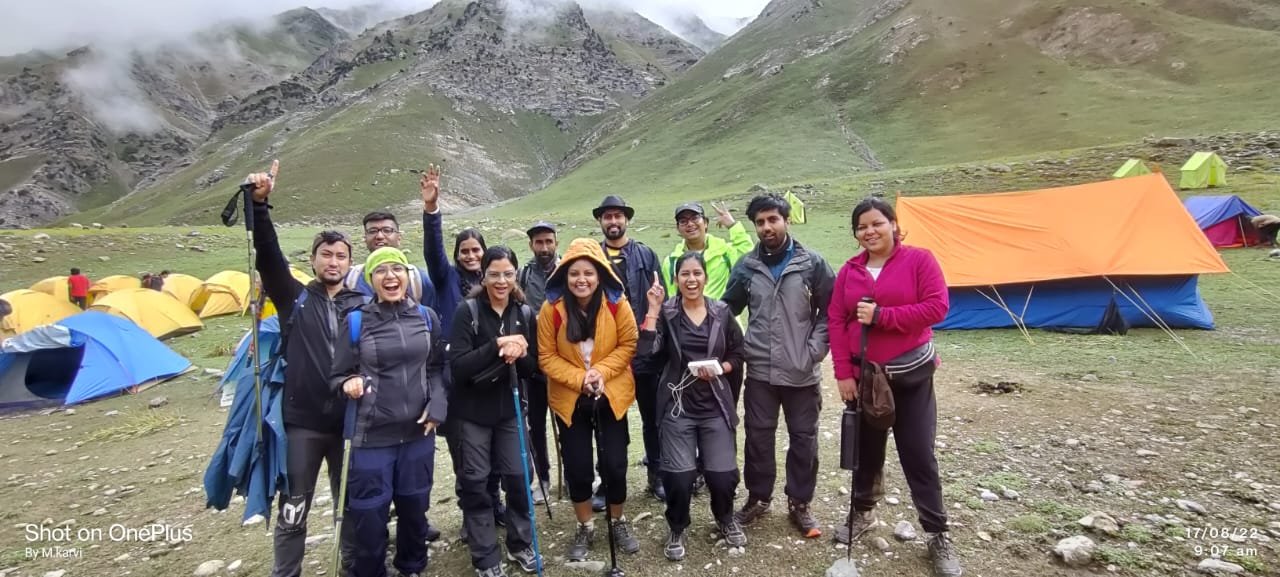
The Beauty of Sar Pass Trek - A Visual Journey Through the Himalayas
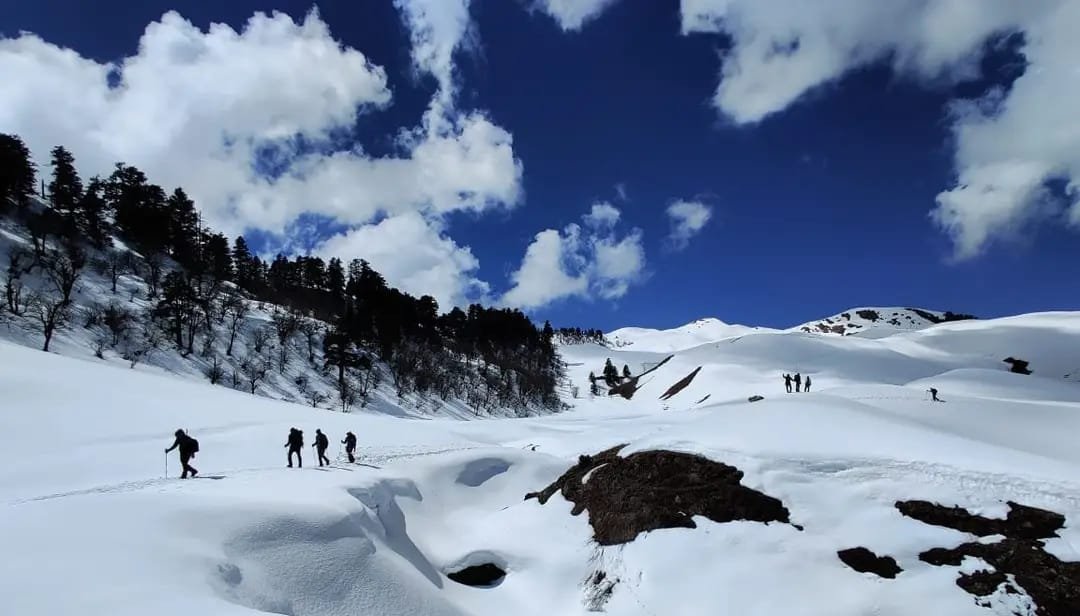
Bali Pass Trek| A Complete Guide to Bali Pass Trekking Route & Cost
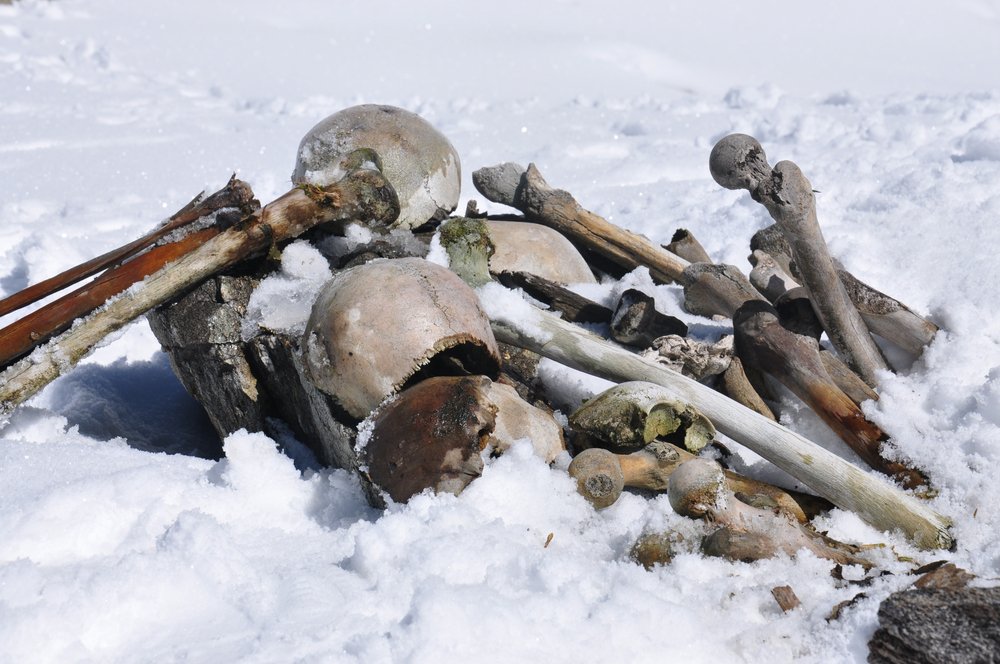
Exploring The Mysterious Skeleton Lake In Uttarakhand
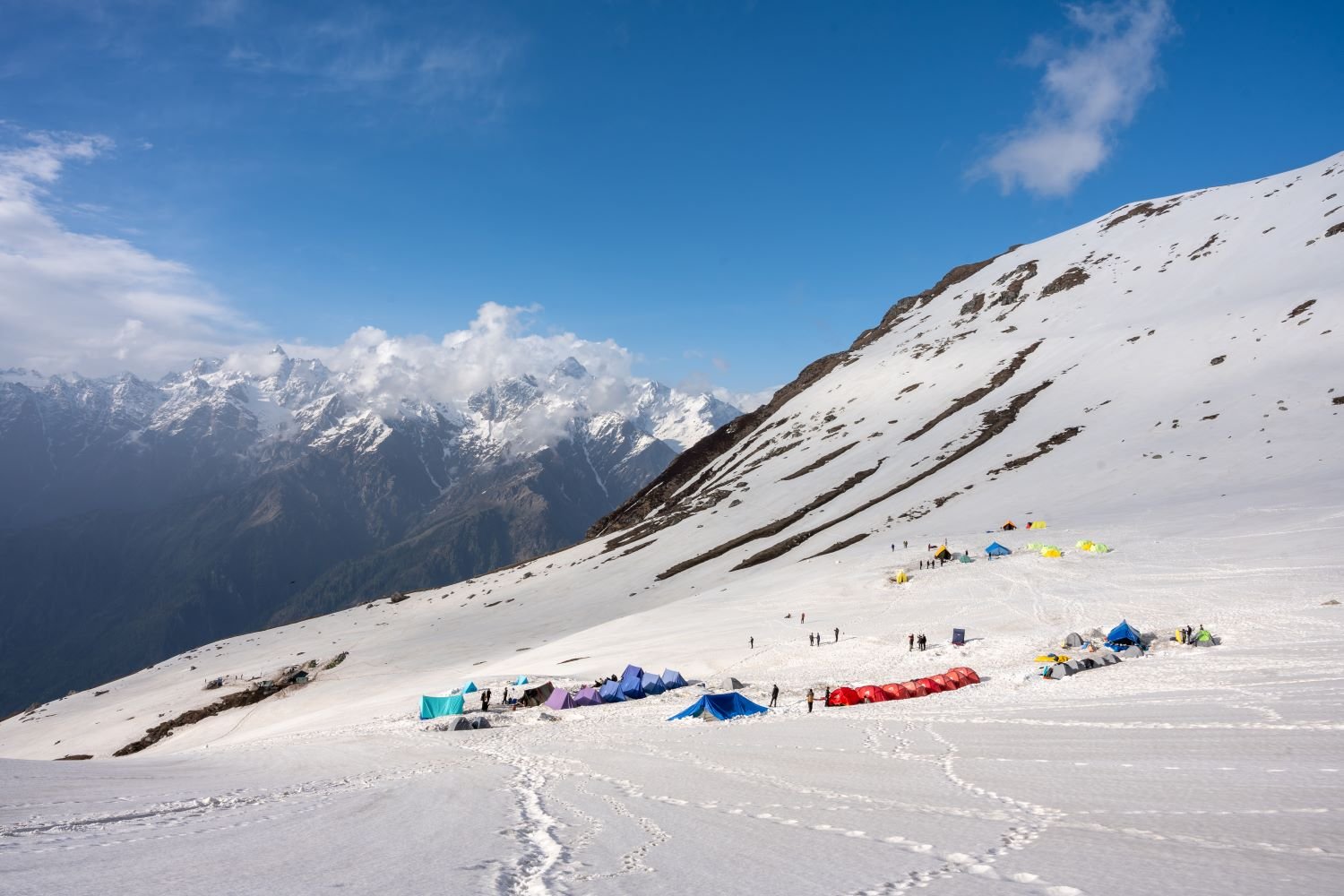
Sar Pass Trek: Detailed Itinerary, Trekking Essentials & Best Time to Visit
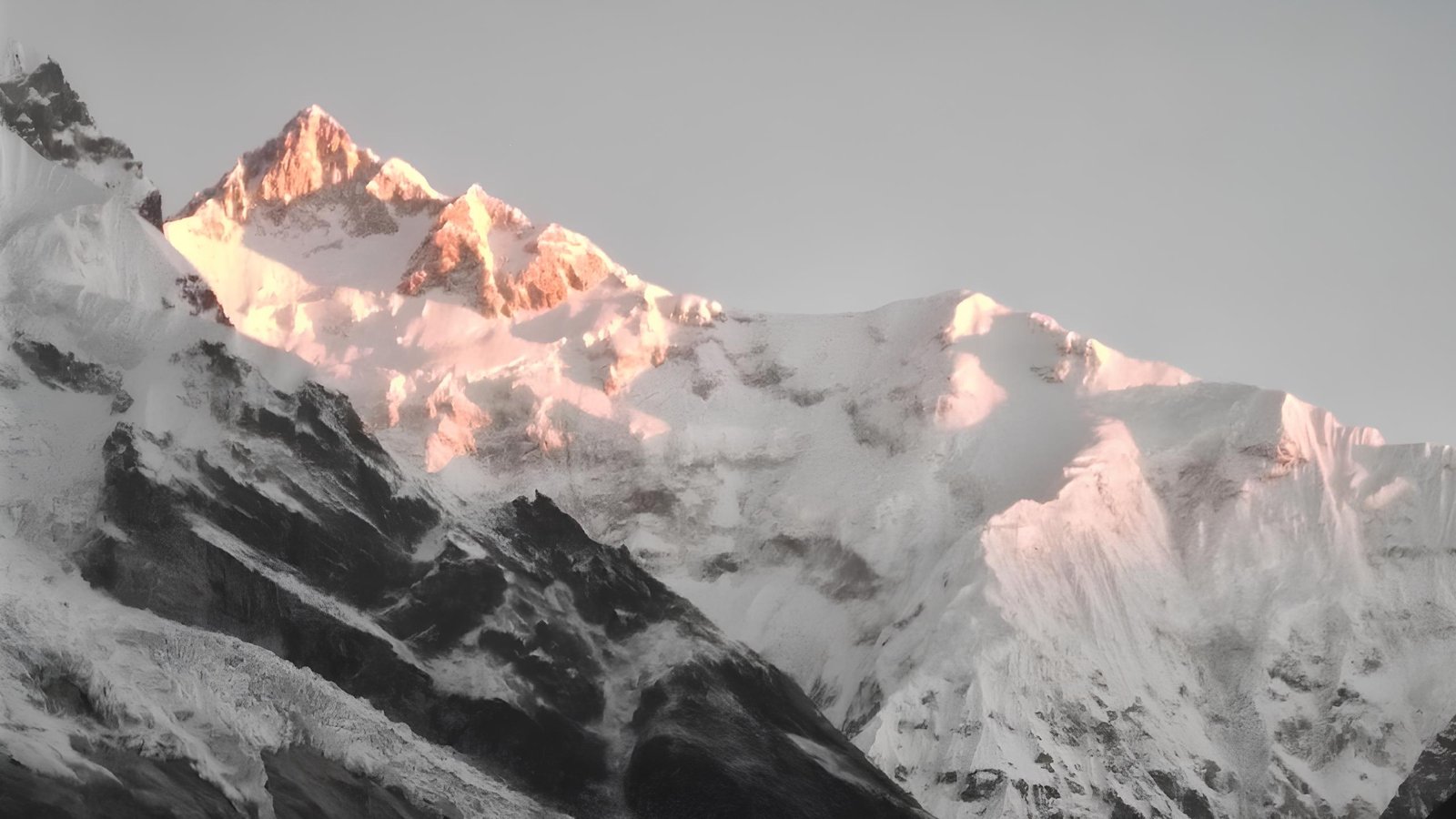
Goechala Trek: Detailed Itinerary, Trekking Essentials & Best Time to Visit

Best Summer Treks in Himalayas- Top Picks for 2025
